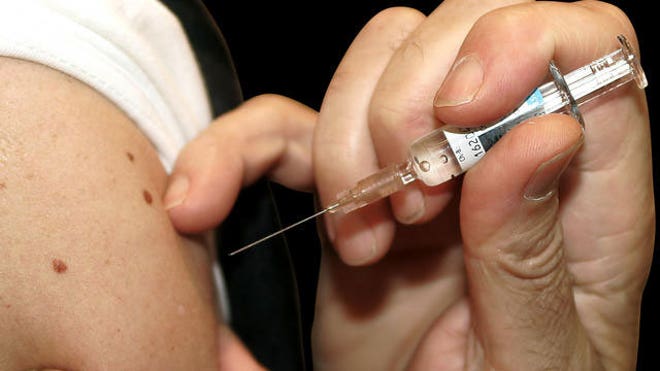I have previously mulled over the implications of treating health more like wealth. Today, I want to mull over the implications of treating health more like paella.
Don't worry--it will make sense in the end! If I may borrow from The Best Exotic Marigold Hotel, if it doesn't make sense, it's not yet the end.
It's a rare day that I don't do at least one interview about nutrition and dieting for a magazine, radio station, TV show, or website. In the weeks leading up to the holidays, the volume of such media requests only grows. We are, it seems, permanently preoccupied, and seasonally obsessed, with what to eat, how much, and how to fix the damage done when we get both of those wrong, as happens all too often.
The odd thing is not the number and frequency of these exchanges; I suppose, in a society struggling so to eat well and control its weight, that's perfectly understandable. The odd thing is that to justify so many stories in so many media outlets so much of the time, every one of them has to pick a different focus. Or, if you will, choose a different "active ingredient."
It might be cutting dietary fat--once, the far most popular approach to "dieting," then maligned as yesterday's news, if not misguided nonsense, and now back on the agenda, courtesy of at least one recent study in the British Medical Journal. And if that is the topic, I am asked: Does cutting fat help with weight loss? Is it good for health?
It might, instead, be cutting carbs--in the form of the original Atkins Diet, now often maligned as yesterday's news even by those who once embraced it, or an updated version of it that pays a bit more attention to varieties of fat. There's also the plant-based Eco-Atkins approach, or the true original: the Paleolithic Diet. And if that is the topic, I am asked: Does cutting carbs help with weight loss? Is it good for health?
It might be going vegetarian. It might be going Mediterranean. It might be lowering the glycemic load. Pick anything you like.
I don't pick any of these, actually. But we'll get back to that.
For now, imagine if, as a society, we were totally preoccupied not with cooking up good health and good looks, but, say ... paella. Let's pretend that what we all want to do is make the best darn paella possible (if that were the case, by the way, you'd be out of luck, because my wife's aunt is the winner!).
Well, then, I suppose every morning show and magazine would need to run stories about paella. And since those stories would need to be different enough from one another to justify their number and frequency, they would each have to pick a different ingredient.
There would be stories only about the rice. And those stories wouldn't mention any other ingredients, as if rice were all there was to it.
There would be stories about the saffron, which, of course, is crucial to good paella. But those stories would fail to mention any other ingredients, as if saffron could stand alone.
There would be stories about the mussels. There would be other stories about the shrimp; still others about the chicken; and others again about the peppers, peas, onions, tomatoes, and the chorizo (we leave chorizo out of ours, for what it's worth).
Your task, then, as the consumer of these stories, is to pick. But of course, you can't really pick. No matter how good the saffron, paella is not made of saffron alone. Nor of rice alone. No one ingredient does a paella make!
You need the whole recipe to make the dish, the quality of which will be a product of the quality of all of the ingredients. The "active" ingredient in paella is ... paella!
As silly as it might be to tell a tale of paella based on just one ingredient at a time, it would still be less silly than our prevailing approach to dietary health. Because there, we don't so much focus on one ingredient to include as we do about one ingredient to exclude. Most stories about diet, weight, and health are about what NOT to eat.
If we devoted ink and electrons to paella in this fashion, there would be stories about why not to put in blueberries, or macadamia nuts, or marshmallows. There could be infinite stories about what not to include in your paella--none of which would really help you make the stuff, would it?
For far too long, we have approached the recipe for health in just this way. I'm not really convinced that 2013 will be the year we stop, but I am at least permitting myself to hope so.
The recipe for eating well involves a variety of real foods, direct from nature, and generally with a shorter life expectancy than your own: vegetables, fruits, whole grains for those inclined, nuts and seeds, beans and lentils. It can include or exclude fish and seafood, some grass-fed lean meats, and organic poultry. It can include or exclude organic eggs and low-fat dairy.
The right recipe for health, like the right recipe for paella, isn't just right with regard to one ingredient--it's altogether good. Eating well is intrinsically rich in nutrients: vitamins, minerals, antioxidants, and fiber. Eating well is low in chemicals, refined starches, added sugars, sodium, and the harmful varieties of dietary fat. Eating well has a low glycemic load. Eating well does not require instructions to avoid foods that glow in the dark; that takes care of itself. In the same way that a good paella recipe naturally omits marshmallows and macadamia nuts, a good recipe for health doesn't need to declare exclusions.
And of course, good paella is delicious. A good diet for health should be, too. With an emphasis on healthful, wholesome ingredients, and the diverse ways to assemble them into a diet customized to your preferences, it should certainly be possible to wind up loving the food that loves your health back.
I practice what I'm preaching here. So, as noted, I don't cut fat or carbs or fructose. I don't focus on lowering my glycemic load or adding fiber. All of these matter--so I eat well, and this all takes care of itself. Including when I enjoy my aunt's paella!
That paella is deliciously defined by what's in it, not what's left out. And it is not just about one ingredient. It's a harmonious blend. The recipe for health is just the same.
Don't worry--it will make sense in the end! If I may borrow from The Best Exotic Marigold Hotel, if it doesn't make sense, it's not yet the end.
It's a rare day that I don't do at least one interview about nutrition and dieting for a magazine, radio station, TV show, or website. In the weeks leading up to the holidays, the volume of such media requests only grows. We are, it seems, permanently preoccupied, and seasonally obsessed, with what to eat, how much, and how to fix the damage done when we get both of those wrong, as happens all too often.
The odd thing is not the number and frequency of these exchanges; I suppose, in a society struggling so to eat well and control its weight, that's perfectly understandable. The odd thing is that to justify so many stories in so many media outlets so much of the time, every one of them has to pick a different focus. Or, if you will, choose a different "active ingredient."
It might be cutting dietary fat--once, the far most popular approach to "dieting," then maligned as yesterday's news, if not misguided nonsense, and now back on the agenda, courtesy of at least one recent study in the British Medical Journal. And if that is the topic, I am asked: Does cutting fat help with weight loss? Is it good for health?
It might, instead, be cutting carbs--in the form of the original Atkins Diet, now often maligned as yesterday's news even by those who once embraced it, or an updated version of it that pays a bit more attention to varieties of fat. There's also the plant-based Eco-Atkins approach, or the true original: the Paleolithic Diet. And if that is the topic, I am asked: Does cutting carbs help with weight loss? Is it good for health?
It might be going vegetarian. It might be going Mediterranean. It might be lowering the glycemic load. Pick anything you like.
I don't pick any of these, actually. But we'll get back to that.
For now, imagine if, as a society, we were totally preoccupied not with cooking up good health and good looks, but, say ... paella. Let's pretend that what we all want to do is make the best darn paella possible (if that were the case, by the way, you'd be out of luck, because my wife's aunt is the winner!).
Well, then, I suppose every morning show and magazine would need to run stories about paella. And since those stories would need to be different enough from one another to justify their number and frequency, they would each have to pick a different ingredient.
There would be stories only about the rice. And those stories wouldn't mention any other ingredients, as if rice were all there was to it.
There would be stories about the saffron, which, of course, is crucial to good paella. But those stories would fail to mention any other ingredients, as if saffron could stand alone.
There would be stories about the mussels. There would be other stories about the shrimp; still others about the chicken; and others again about the peppers, peas, onions, tomatoes, and the chorizo (we leave chorizo out of ours, for what it's worth).
Your task, then, as the consumer of these stories, is to pick. But of course, you can't really pick. No matter how good the saffron, paella is not made of saffron alone. Nor of rice alone. No one ingredient does a paella make!
You need the whole recipe to make the dish, the quality of which will be a product of the quality of all of the ingredients. The "active" ingredient in paella is ... paella!
As silly as it might be to tell a tale of paella based on just one ingredient at a time, it would still be less silly than our prevailing approach to dietary health. Because there, we don't so much focus on one ingredient to include as we do about one ingredient to exclude. Most stories about diet, weight, and health are about what NOT to eat.
If we devoted ink and electrons to paella in this fashion, there would be stories about why not to put in blueberries, or macadamia nuts, or marshmallows. There could be infinite stories about what not to include in your paella--none of which would really help you make the stuff, would it?
For far too long, we have approached the recipe for health in just this way. I'm not really convinced that 2013 will be the year we stop, but I am at least permitting myself to hope so.
The recipe for eating well involves a variety of real foods, direct from nature, and generally with a shorter life expectancy than your own: vegetables, fruits, whole grains for those inclined, nuts and seeds, beans and lentils. It can include or exclude fish and seafood, some grass-fed lean meats, and organic poultry. It can include or exclude organic eggs and low-fat dairy.
The right recipe for health, like the right recipe for paella, isn't just right with regard to one ingredient--it's altogether good. Eating well is intrinsically rich in nutrients: vitamins, minerals, antioxidants, and fiber. Eating well is low in chemicals, refined starches, added sugars, sodium, and the harmful varieties of dietary fat. Eating well has a low glycemic load. Eating well does not require instructions to avoid foods that glow in the dark; that takes care of itself. In the same way that a good paella recipe naturally omits marshmallows and macadamia nuts, a good recipe for health doesn't need to declare exclusions.
And of course, good paella is delicious. A good diet for health should be, too. With an emphasis on healthful, wholesome ingredients, and the diverse ways to assemble them into a diet customized to your preferences, it should certainly be possible to wind up loving the food that loves your health back.
I practice what I'm preaching here. So, as noted, I don't cut fat or carbs or fructose. I don't focus on lowering my glycemic load or adding fiber. All of these matter--so I eat well, and this all takes care of itself. Including when I enjoy my aunt's paella!
That paella is deliciously defined by what's in it, not what's left out. And it is not just about one ingredient. It's a harmonious blend. The recipe for health is just the same.





















 California is taking the proper steps to ban an extremely controversial form of psychotherapy that was developed to help turn gay teens straight. It will be the first state to have successfully banned the program.
California is taking the proper steps to ban an extremely controversial form of psychotherapy that was developed to help turn gay teens straight. It will be the first state to have successfully banned the program.







